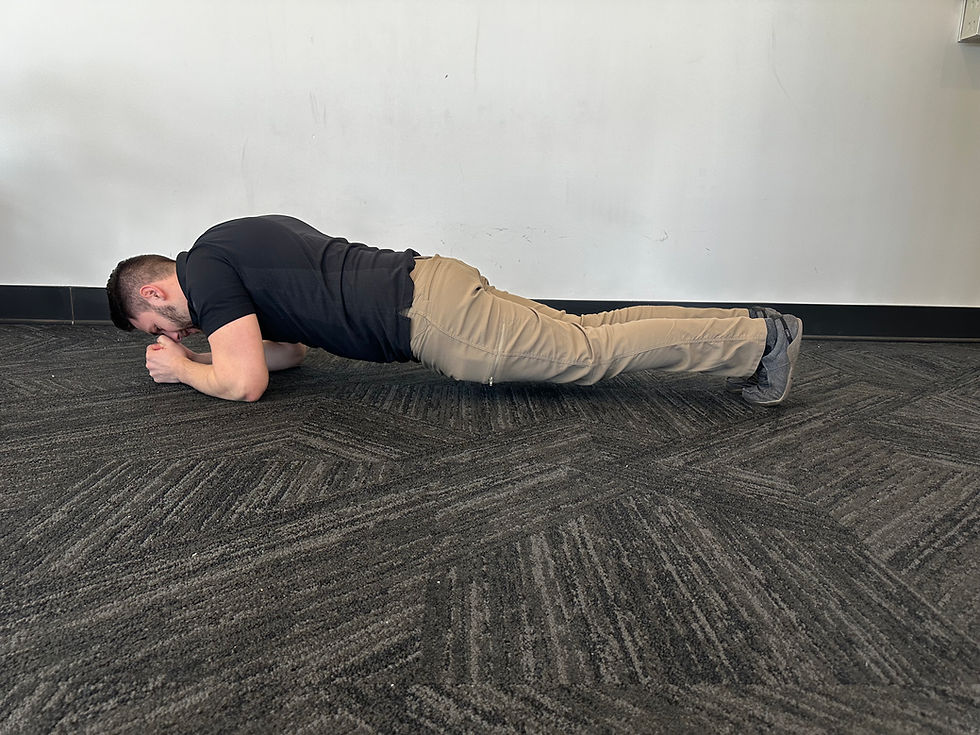Lying Dumbbell Pullover Exercise
- Benjamin Mishleau
- Jan 23
- 3 min read
Updated: Mar 4
The lying dumbbell pullover is a classic bodybuilding exercise that was introduced in 1911 by Alan Calvert, the founder of the Milo Barbell Company. It was popularized by early strength athletes and bodybuilders such as Eugen Sandow and later cemented as a staple by figures like Arnold Schwarzenegger and Franco Columbu in the 1970s. Known as a versatile movement, the dumbbell pullover has been praised for its ability to work both the chest and the lats, depending on the angle and form used. Originally considered a "ribcage expander" due to its deep-stretching nature, the exercise was incorporated into full-body routines to improve flexibility and muscle development. Today, it remains a go-to exercise in bodybuilding and functional fitness for building upper body strength and improving mobility.
Purpose: Strengthens and stretches the chest, lats, and shoulders. It also engages the core and helps improve upper body mobility, making it a valuable addition to strength training and flexibility routines.
Targeted Areas: Latissimus dorsi (lats), pectoralis major (chest)
Instructions:
Lie flat on a bench with your entire back and head supported and feet firmly planted on the bench.
Hold a dumbbell with both hands, gripping it securely on the inner plate. Extend your arms straight up toward the ceiling, keeping a slight bend in your elbows.
Slowly lower the dumbbell in an arc motion behind your head while maintaining the slight bend in your elbows.
Lower the dumbbell until you feel a deep stretch in your chest and lats, but avoid going beyond a comfortable range of motion or allowing your low back to rise off of the bench.
Engage your chest and lats to reverse the motion, bringing the dumbbell back to the starting position over your chest.
Perform 8–12 repetitions for 2–4 sets, ensuring controlled movement throughout.
Tips:
Keep your core engaged to prevent your lower back from arching.
Use a moderate weight to maintain proper form and avoid overextending.
Avoid locking your elbows or using momentum to lift the weight.
Who Should Do the Lying Dumbbell Pullover?
The lying dumbbell pullover is an excellent exercise for targeting the chest, lats, and triceps while also engaging the core. It is ideal for:
Bodybuilders & Strength Athletes: Great for developing upper body strength, particularly the chest, lats, and triceps. It's an effective accessory lift for improving upper body size and strength.
Athletes: Beneficial for athletes in sports that require overhead movements or a strong upper body, such as swimming, tennis, or rock climbing.
People Looking to Improve Upper Body Mobility: The movement helps stretch and strengthen the chest and back, improving flexibility and mobility in the upper body.
Individuals with Shoulder Mobility Issues: The lying dumbbell pullover can help improve shoulder flexibility and mobility by allowing for a deeper stretch.
People Seeking a Full Upper-Body Stretch: This exercise provides a great stretch for the lats and chest, making it a good option for those looking to enhance flexibility and range of motion.
Beginners: It can be performed with lighter weights and gradually increased as strength develops, making it accessible for those new to resistance training.
Who Should Avoid or Modify the Lying Dumbbell Pullover?
While generally effective, some individuals may need to modify or avoid the lying dumbbell pullover due to specific conditions:
People with Shoulder Injuries: The lying dumbbell pullover involves significant shoulder rotation and extension. Those with rotator cuff injuries, impingement, or shoulder instability may find the movement aggravates their condition.
Individuals with Lower Back Issues: This exercise can place strain on the lower back if performed incorrectly or with excessive weight. Those with herniated discs, sciatica, or lower back pain should avoid this exercise or modify it by keeping the spine well-supported.
People with Elbow Pain or Discomfort: The exercise requires arm extension overhead, which can put stress on the elbows. If there are pre-existing elbow issues, such as tendinitis, the pullover may exacerbate the discomfort.
Individuals with Neck Issues: The position of the head and neck during the exercise may be uncomfortable for those with neck pain or tension. Modifying the head position or avoiding the exercise may be necessary.
Pregnant Women (Later Stages): Lying down while performing overhead movements may not be comfortable or safe in the later stages of pregnancy due to changes in balance and pressure on the abdominal area.
Those with High Blood Pressure or Heart Conditions: Lifting weights overhead can cause a rise in blood pressure. Individuals with cardiovascular concerns should consult a healthcare provider before attempting this exercise.
If It Causes Pain: If in doubt, if it causes pain, don't do it.









Comments